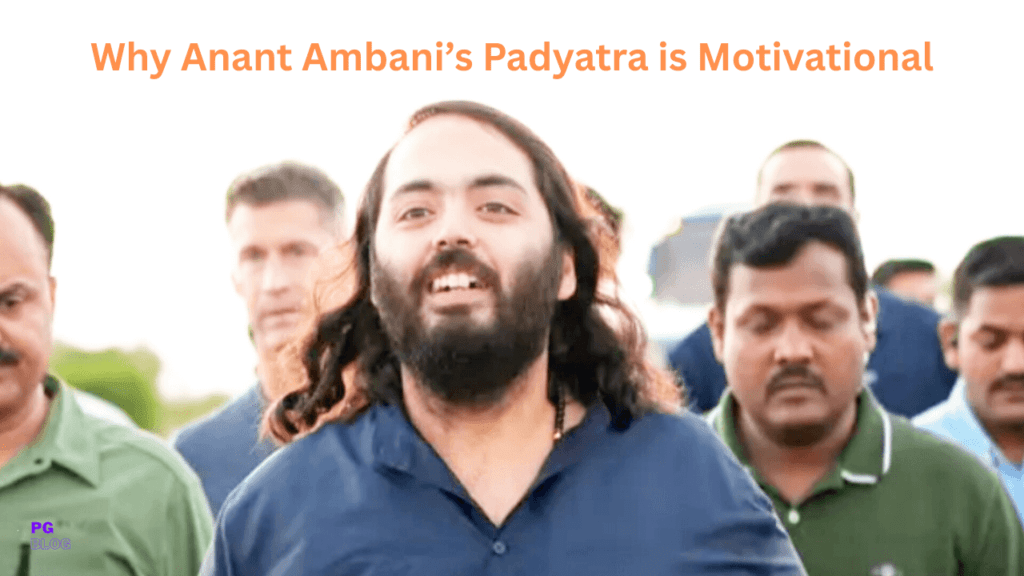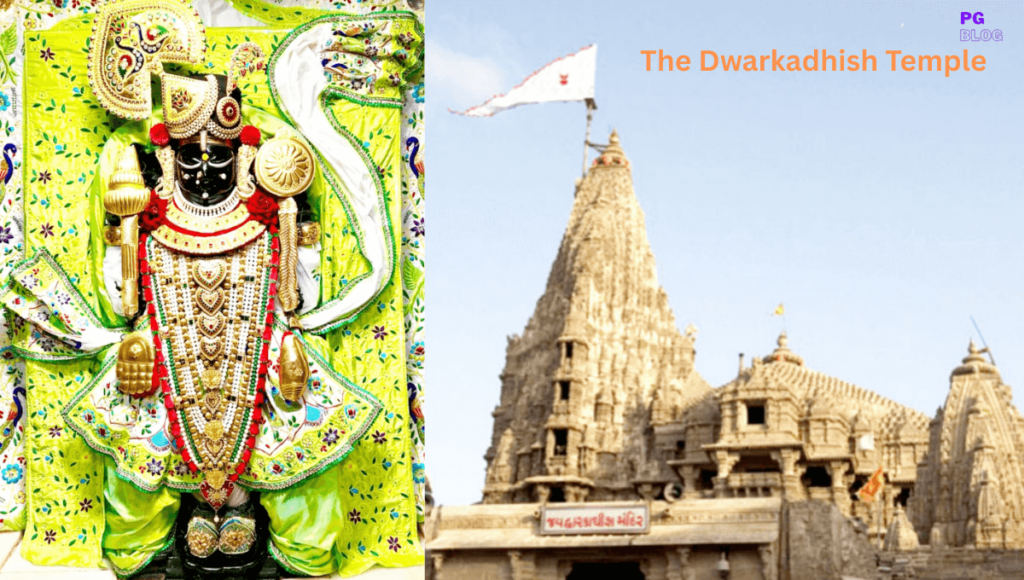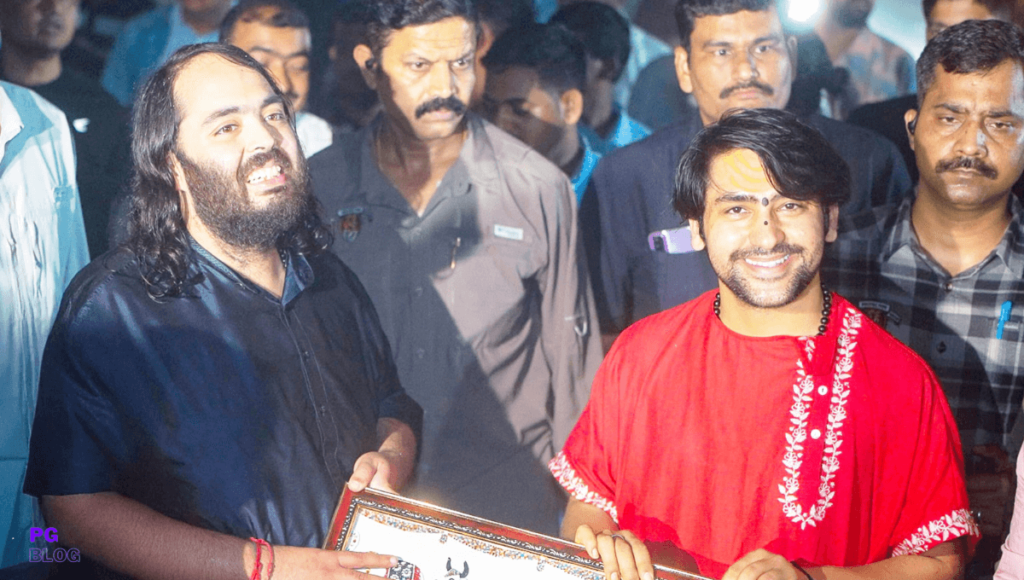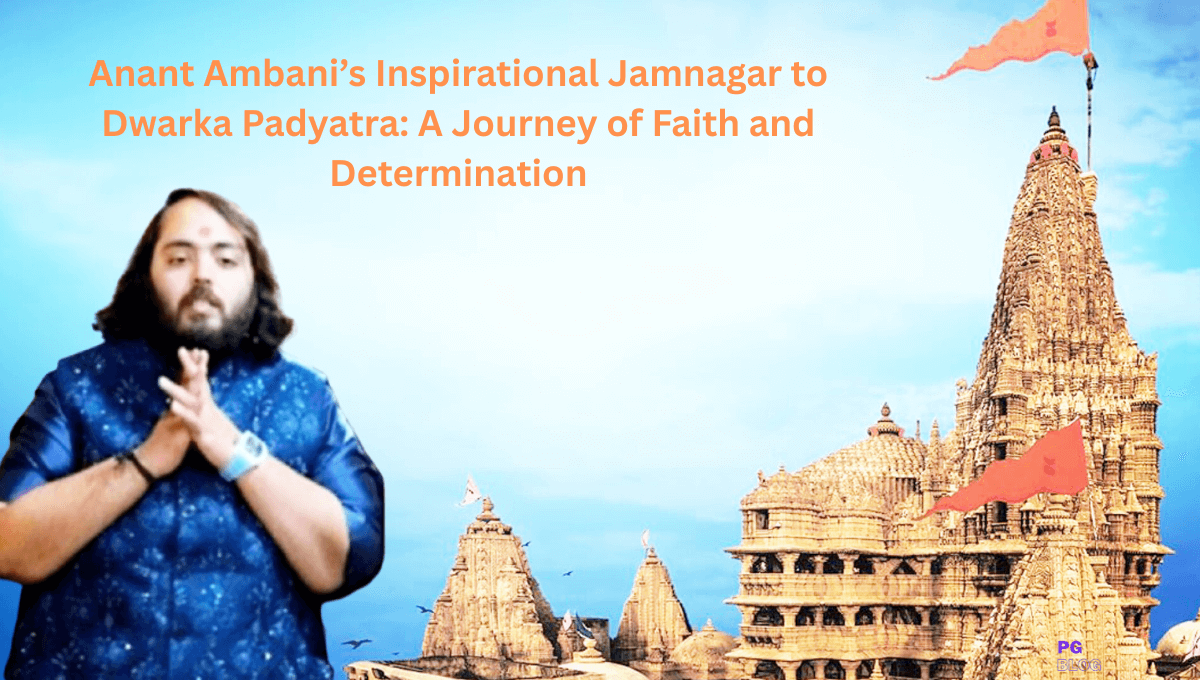In a world driven by speed and luxury, “Anant Ambani“, the youngest son of Mukesh Ambani, chose a path deeply rooted in spirituality and self-discipline. His recent Jamnagar to Dwarka padyatra has captured the hearts of millions across India and beyond. Walking nearly 140 kilometers in scorching heat, rough terrains, and under intense spiritual commitment, Anant Ambani’s journey wasn’t just a walk—it was a testament to perseverance, faith, and inner strength.
In this blog, we dive deep into Anant Ambani’s inspiring padyatra, its significance, and why it is being hailed as a symbol of modern devotion and personal transformation.
Table of Contents

Who is Anant Ambani?
Anant Ambani is the youngest heir of India’s biggest business conglomerate, Reliance Industries Limited. Despite being born into immense wealth and fame, Anant has often stayed away from the limelight, focusing on personal growth, spirituality, and service.
Over the years, he has garnered attention not only for being a member of the prestigious Ambani family but also for his incredible weight loss transformation and his active interest in spiritual activities, animal welfare, and philanthropy.
His padyatra from Jamnagar to Dwarka shows yet another powerful side of his personality—deep
faith in Lord Krishna and the ancient traditions of Bharat.
The Significance of the Jamnagar to Dwarka Route:
The route from Jamnagar to Dwarka is not just a physical path; it is steeped in mythological and spiritual significance.
Dwarka is one of the four holy Chardham pilgrimage sites.
It is believed to be the kingdom of Lord Krishna, making it a magnet for millions of devotees each year.
Walking (padyatra) to Dwarka is considered an act of ultimate devotion and surrender, symbolizing the journey of the soul towards divine consciousness.
By choosing this route, Anant Ambani aligns himself with ancient traditions of Bharat, where kings, sages, and common people alike undertook such pilgrimages to seek blessings and purification of the soul.
Anant Ambani’s Padyatra: The Details
Distance Covered: Approximately 140 kilometers
Starting Point: Reliance Township, Jamnagar
Destination: Dwarkadhish Temple, Dwarka
Purpose: Spiritual devotion to Lord Krishna and personal vow
Duration: Completed in a single day
Anant undertook the journey barefoot under the open sky, walking with deep devotion. The padyatra was kept simple and low-key, avoiding media fanfare.
Key Highlights:
Barefoot Journey:
Walking barefoot on hot roads reflects intense physical endurance and mental strength.
Simplicity and Humility:
Despite his family’s stature, Anant maintained a humble profile throughout the journey.
Spiritual Focus:
Chanting and meditation were integral parts of his walk, highlighting his unwavering faith.

Why Anant Ambani’s Padyatra is Motivational
- Breaking Stereotypes
In an era where luxury is often seen as the only way forward for the ultrarich, Anant Ambani broke the stereotype. His journey proves that inner peace, discipline, and spirituality are more significant than material wealth. - Personal Commitment
Reports suggest that Anant had made a personal vow for this padyatra, possibly for blessings for his future or gratitude for past achievements. Honoring one’s word to oneself is a rare quality and speaks volumes about his character. - Physical Endurance
Considering Anant’s past struggle with health issues, his ability to walk 140 kilometers in one stretch showcases an incredible level of physical fitness, determination, and mental resilience. - Inspiring Youth:
Young Indians today often seek role models who balance tradition and modernity. Anant’s padyatra serves as a reminder that embracing one’s roots and spirituality can go hand in hand with ambition and success.

Lessons We Can Learn from Anant Ambani’s Padyatra
- Stay Rooted in Tradition.
No matter how high you rise in life, your strength lies in staying connected to your roots and culture. - Discipline Over Comfort
Choosing to walk barefoot under harsh conditions when luxury cars are at your disposal teaches that discipline leads to true spiritual and personal growth. - Faith Moves Mountains.
When the journey is fueled by unwavering faith, no obstacle is too big. - Humility is Strength.
The real power lies in humility. Despite being from India’s richest family, Anant’s approach was simple, respectful, and selfless.

About the Dwarkadhish Temple
The Dwarkadhish Temple (also known as Jagat Mandir) is one of the most revered shrines dedicated to Lord Krishna. Located in Gujarat, it is said to have been originally built by Vajranabha, the grandson of Krishna.
Key Features:
Architecture: The temple showcases magnificent Chalukya style architecture.
Significance: It is part of the Chardham Yatra (four sacred pilgrimage sites).
Spiritual Aura: Devotees believe that visiting this temple washes away sins and fulfills wishes.
For Anant, reaching this temple on foot marked the culmination of a deep spiritual quest.

The Larger Message
Anant Ambani’s padyatra is much more than just a spiritual journey. It’s a symbol of personal evolution, faith-driven action, and inspiration for millions.
It reminds us that success is not just about how much you achieve, but also about how deeply you stay connected to your inner self.
In today’s fast-paced life, where instant gratification is the norm, Anant’s slow, steady, and heartfelt walk toward a divine goal is a powerful counter-narrative, encouraging all of us to slow down, reflect, and find our true path.
Final Thoughts
Anant Ambani’s Jamnagar to Dwarka Padyatra is a shining example of the power of devotion, discipline, and determination. It’s a journey that will be remembered not just for the distance covered, but for the spirit it symbolizes.
Whether you’re a devotee, a fitness enthusiast, a youth seeking inspiration, or someone interested in spirituality, there’s something deeply motivational about Anant’s journey.
As Anant reached the sacred city of Dwarka, he didn’t just fulfill a personal vow—he inspired a nation to believe in the age-old wisdom: when the heart is pure and the intention strong, no journey is too long.

